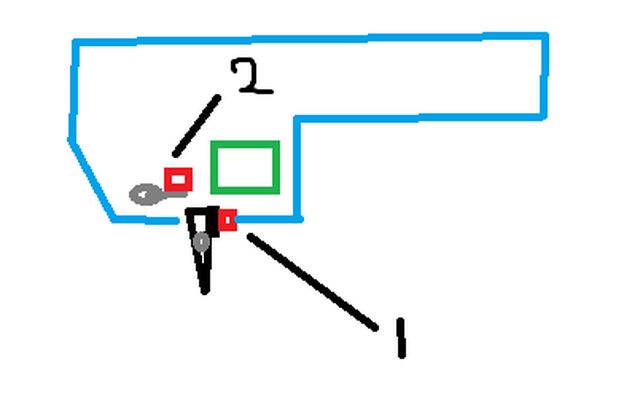I have been thinking about something like this a lot recently too. Here's a suuuuper rough ms paint schematic:

This is basically T6's idea I think. The red squares are switches; switch 1 is the trigger and switch 2 is the cutoff lever. Switch 2 is closed by default, and switch 1 closes when the trigger is pulled. When the cutoff lever is activated, switch 2 opens the circuit so the motor temporarily stops. The trick is, when the cutoff lever comes back, you don't want the circuit to close again.
Kjones, is there some kind of gate that will only become true once switch 1 is opened and closed again? If so, that should allow semi-auto to work.
Quick edit for detail:
I've done a bit of looking online for components (disclaimer: I have basically no experience with electronics) and I found some micro push buttons that could work since they're the right size. However, they can only handle around .2 amps, which is bad. Luckily, with a mosfet the switches shouldn't be getting a lot of current, right? Most of it goes through the fet I think, but actual quantities are important here. Also, I don't know how mechanically reliable those microswitches are (the Ares microswitch trigger was notoriously unreliable if I remember right).
Double edit because I read more of the thread:
I don't think an arduino would be good for a final version because they are a bit too big to fit in a gearbox, but maybe you could design a PCB that fits? The arduino would be great for prototyping the software though. Obviously a fully Computerized integrated fet is possible (spectre) but that kind of takes the cheap and simple part out of the whole concept. In my opinion, a combination of simple electrical switches and the existing mechanical parts would be ideal. That way you improve the normal AEG trigger, but you don't have to worry about sector gear sensors and microprocessors.